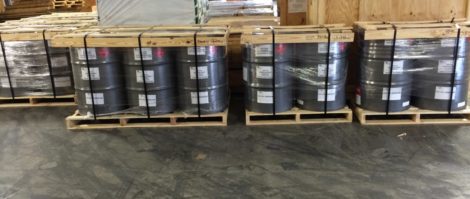IATA has made it their mission to offer proper guidelines for DGR (Dangerous Goods Regulations) for the longest time.
Now is the time for another edition, the 62nd. All airline operators and shippers must catch up with these new regulations to safely transport hazardous items, especially by airplane.
Also, every airline must note that it’s mandatory to abide by the new regulations starting 1st January 2021.
The IATA 62nd Edition of DGR
2021 new set of Dangerous Goods Regulations by IATA. These are significant changes that include:
- Inclusion of UN Numbers together with proper names for each shipment on the list of DGR. All these are in section 4.2.
- The revision of all IATA packaging instructions for DGR, including PI 965 and PI 970, for batteries or lithium cells.
- The revision on the proper way to assign PG to mixtures and corrosives.
- Changes in section 1.5 include adopting a new competency-based framework for dangerous goods.
- Section 4.4 addition of special provisions together with the amendment of existing special conditions.
- Add a new method for addressing solid medical waste, especially that has Category A infections substances- 3.6.2.4
- The renumbering packing instructions PI for UN 3291 from PI 622 to 621
DGR Competency-Based Training
According to IATA, the above changes are crucial for every industry player to note and implement by the specified date. However, there’s further addition for a competency-based training in regards to dangerous goods.
When such competency training occurs, it gets easier to categorize employees. You can note the type of skills each employee possess and what areas they need improvement. After that analysis, proper training follows to ensure all employees are up to date with handling dangerous goods.
Such training shares similarities with the hazmat training that includes all employees on all levels. It doesn’t matter what position you last held or your skill level, and the training is for all. The same approach for hazmat training means the DGR competency training can take place every 2 years.
The 62nd edition of the IATA Dangerous Goods Regulations incorporates all amendments made by the ICAO Dangerous Goods Panel in developing the content of the 2021–2022 edition of the ICAO Technical
Instructions as well as changes adopted by the IATA Dangerous Goods Board.
The following list is intended to assist the user to identify the main changes introduced in this edition and must not be considered an exhaustive listing.
The changes have been prefaced by the section or subsection in which the change occurs.
DANGEROUS GOODS CHECKLIST FOR A NON-RADIOACTIVE SHIPMENT
The recommended checklist appearing on the following pages is intended to verify shipments at the origin.
Never accept or refuse a shipment before all items have been checked.
ACCEPTANCE CHECKLIST FOR DRY ICE
A checklist is required for all shipments of dangerous goods (9.1.4) to enable proper acceptance checks to be made.
Download the following example checklist to assist shippers and carriers with the acceptance of dry ice when packaged on its own or with non-dangerous goods.

